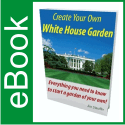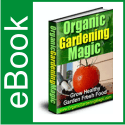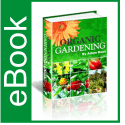Planning a Raised Garden Bed: Not just for the elderly or disabled.
Planning a Raised Garden Bed: Not just for the elderly or disabled.
Article by Mish James
Not only do raised garden beds look esthetically pleasing, they are perfect for older or disabled gardeners as well as for anyone who dislike doing a lot of hard-on-the-back bending.
Raised beds should be sufficiently wide enough to comfortably reaching the middle from either side easy, especially if you plan to grow vegetables or flowers for cutting or harvesting. It is a good idea to leave a path between beds that is wide enough for your wheelbarrow or wheelchair to move freely through.
Your raised garden bed should also be at height that is suitable for you to stand or sit next too. If you can not stand for long periods then it is a good idea to have the beds at a height that you can sit next too but still be able to reach into the middle of the garden bed.You may even be able to incorporate the edge of the garden bed into a seat, so that you can sit on the garden bed as you work.
Once you have settled on the desired sizes for your raised garden beds, buy the timber necessary for raising the bed to the desired height and width. Dig a trench at least half a shovel in depth around the bed perimeters; if your raised garden bed is located on a slope, dig the top trench deeper than the lower one to ensure that the finished bed sides will be level.
Build the sides for the raised bed, settling the lumber into the groove of the trench. Adding posts at the corners will make the garden beds more stable. Remember that wood can warp, so place your boards so that visible curves of the wood are on the outside of the bed to avoid having nails pop out later on.
When the raised garden beds are built in is now time to fill them with soil. If your soils are clay or otherwise heavy, lighten them by mixing in some sand and organic matter first.If your soils are sandy or light then organic matter may need to be added. Buying premixed potting or topsoil soil that contains a good balance of sand, peat, and organic matter is the easiest way to go. The other way to go is to fill the beds with alternate layers of newspaper, straw or hay and potting mix, like what you would do for a no dig garden.
When your beds are filled with soil, you’re ready to start planting and enjoying your new raised garden beds!
About the Author
Learn more about plants, gardens and homes by visiting http://www.plant-garden-home.info, a popular home and garden website that offers information, tips and free resources and advice.
Use and distribution of this article is subject to our Publisher Guidelines
whereby the original author’s information and copyright must be included.

 June 13, 2012
June 13, 2012 







